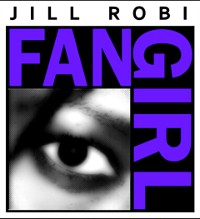Though a bit late, I had a lot of thoughts I wanted to express about the latest in comic book movie ventures, Todd Phillip’s “The Joker.”
Most reviews of this film pertained to the perceived commentary on mental illness. While that is undoubtedly part of the narrative, in my opinion, it is not the focal point of the film.
It begins with Gotham in turmoil and basically a dumpster, with literal hard to kill super rats on the loose. Billionaire Thomas Wayne is on the news, giving interviews about how he can basically make Gotham into the powerhouse it used to be in days of yore. Or more succinctly, make Gotham great again. He also refers to anyone poor or indigent as a bunch of “jokers.” The poor and working class are very much against a system that clearly caters to the one percent, a system that abuses and neglects Arthur Fleck (Joaquin Phoenix) from birth. At one point, a newspaper headline reads, “KILL THE RICH.” Gotham PD is shown as being overly aggressive, beating protesters, giving old ladies strokes, and even shooting a passenger on the train (by accident, but still) when he didn’t move out of the way fast enough. The passenger later died, and the other protesters on the train beat the two detectives into critical condition. When this appears as a news story, the emphasis is on what the mob did to the two cops, and not the reason why they were attacked by the mob in the first place.
 In this film, we learn some very important notes about the system, and how they directly affect, and ultimately create, Arthur’s Joker alter ego:
In this film, we learn some very important notes about the system, and how they directly affect, and ultimately create, Arthur’s Joker alter ego:
– Arthur’s mother, Penny Fleck, is coerced and swindled by Thomas Wayne after giving birth to his son, signing paperwork stating she adopted the boy (note the photo Arthur later finds of Penny, with the back inscribed, “Love your smile. -TW).
– Penny ends up in an abusive relationship with a man, who beats young Arthur so severely he has permanent brain damage. He is found chained to a radiator, malnourished.
– Penny never loses custody of her son, even after she is sent to Arkham Asylum under evaluation.
– Arthur ends up with a disorder, and needs medication for the rest of his life.
– The city cuts funding, and Arthur loses access to his social worker, as well as his medication. His social worker tells him point blank, “They don’t give a shit about people like you. They really don’t give a shit about people like me,” a clear point made about the disabled and mentally ill, as well as minorities (specifically, black people).
Arthur’s first victims are, coincidentally, three Wayne employees who looked like they stepped out of “Wolf of Wall Street.” They first harass a woman, and are distracted by Arthur, who is laughing uncontrollably due to his condition. They take his things, beat and kick him, until Arthur pulls a gun. He shoots two, then chases down the third.
The actions of the mysterious clown (before Arthur’s identity is revealed) spurs more protests and a full on movement, anarchy littering the streets as the neglected denizens of Gotham speak their unheard rage with acts of vandalism and violence. The chaos that ensues in the city against the elite is blamed solely on the Joker, ignoring how the bankrupt system gave him life and a platform.
The film is set up with beautiful aesthetics, from artistic cinematography to a moving musical score. Joaquin Phoenix gives a mesmerizing performance, from his graceful movements, to his gaunt, haunting appearance. If you haven’t seen it, please do so. And if you have, please see it again with these points in mind.




